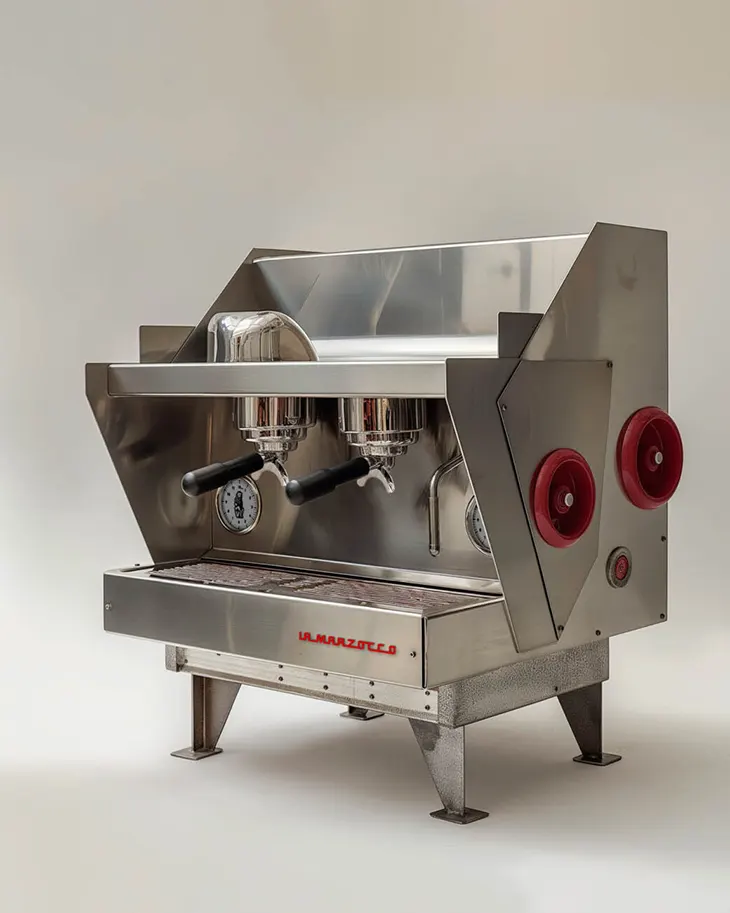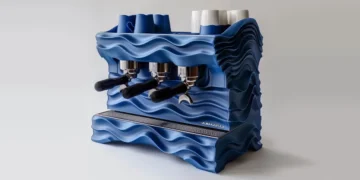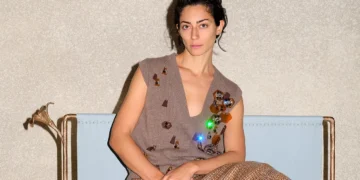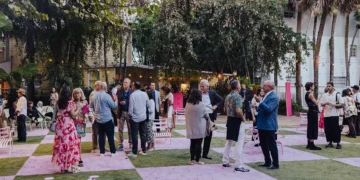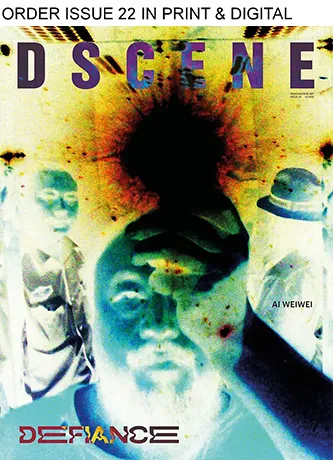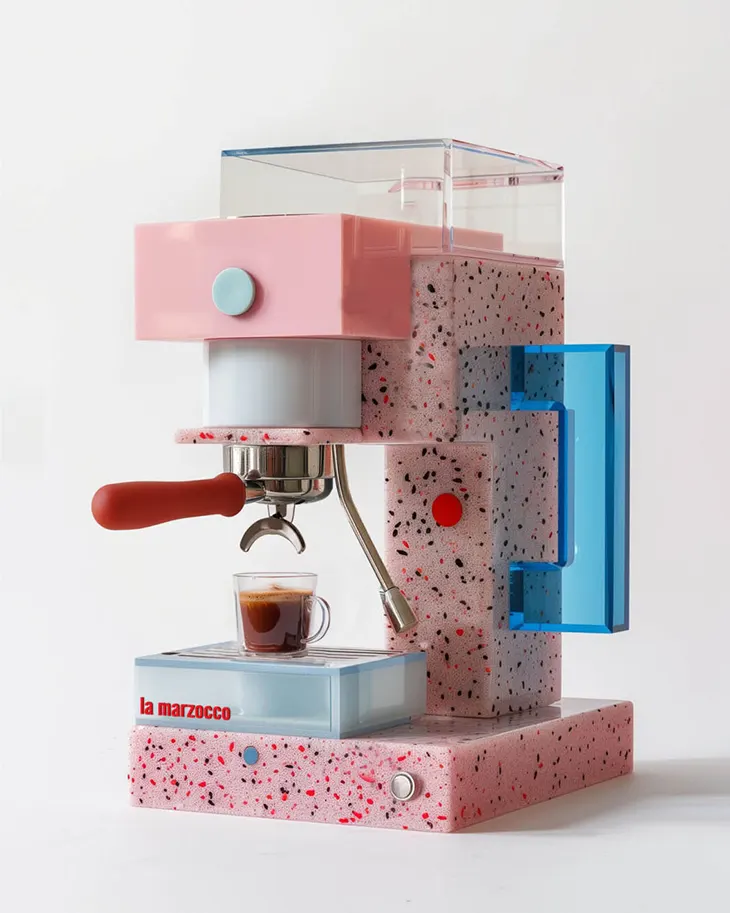
Sustainable design, including sustainable coffee machines, continues to evolve, from functional efficiency to more expressive, narrative-driven approaches. Instead of limiting recycled materials to invisible components or muted surfaces, designers now explore how reuse can shape not just performance, but perception. One example comes through the work of designer Tina Bobbe, whose Pipe Frame and a series of AI-generated espresso machine concepts use recycled and industrial materials to suggest an alternative design language, one where reuse sparks creativity rather than signals limitation.
DESIGN
These questions drive the work of Tina Bobbe, a designer and researcher based in Dresden, who explores the aesthetic and conceptual possibilities of circular design. Rather than simulate finished products for immediate production, she focuses on speculative form, testing how post-consumer materials like plastic, aluminum, or sheet metal might reshape everyday tools such as coffee machines. She treats material reuse not as a technical constraint, but as a visual language.
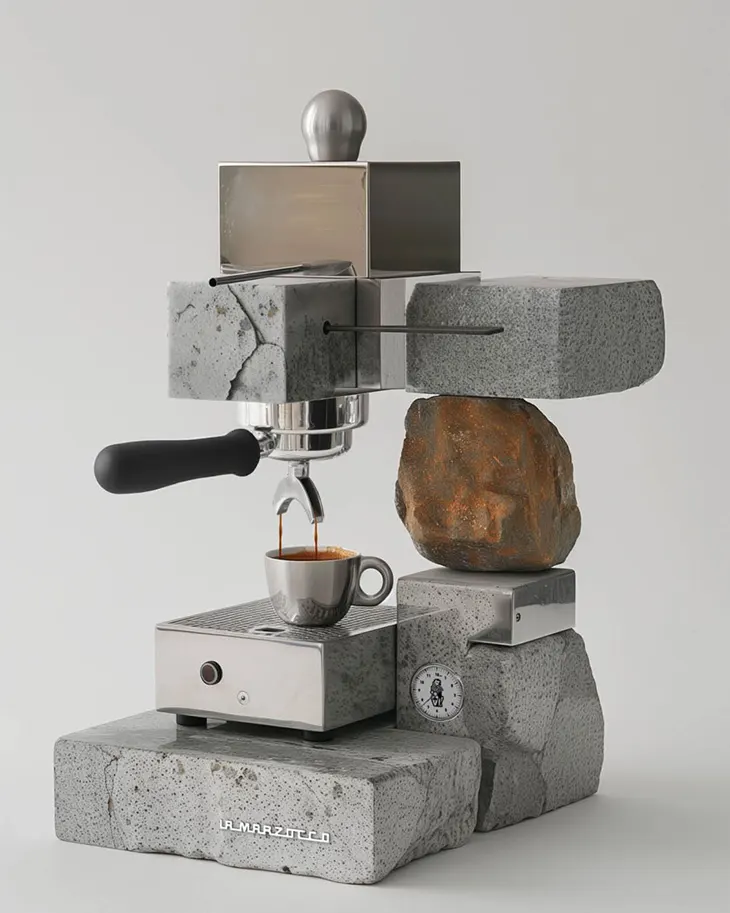
AI as a Tool for Circular Imagination
Through the use of generative artificial intelligence, Bobbe constructs fictional espresso machines that exist somewhere between sculpture and object. Created as a conceptual project for La Marzocco, the machines explore exaggerated forms and richly textured surfaces, drawing inspiration from the expressive design language of 1980s Italy. The images don’t ask whether the machines could function, but whether they could shift how we view material waste and consumer objects. Her work asks: Can a recycled machine still feel personal, surprising, or playful?
These AI-generated artifacts act as design provocations. They reframe waste as a starting point for creativity, rather than a problem to hide. In doing so, they expand what sustainable design might look like, not reduced or clinical, but expressive and layered. The images explore how materials with past lives might carry visible traces into new forms, prompting designers and audiences to see value in irregularity, texture, and transformation.
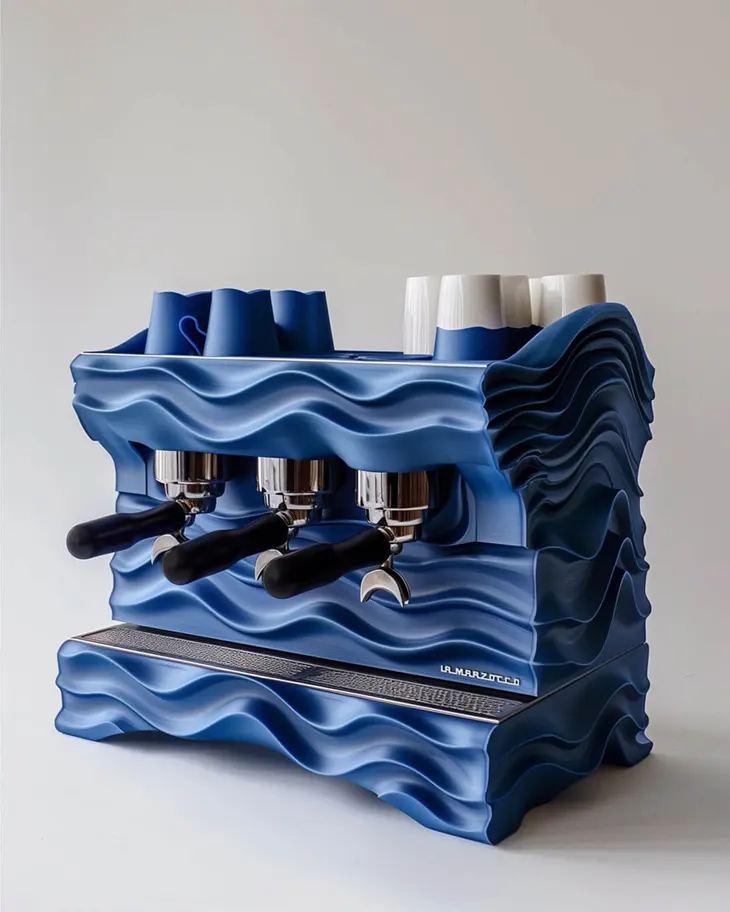
Pipe Frame: From Visual Concept to Physical Object
Beyond speculative images, Bobbe’s Pipe Frame and Pipe Frame Mini show how this thinking can translate into real-world objects. Built from steel, stainless steel, and aluminum, each frame reimagines the structure around an espresso machine as a sculptural piece. The materials, typically used in technical or industrial contexts, gain new presence through curved lines, polished surfaces, and scale. Finished in glossy lacquer and made by hand in Germany, the frames turn coffee preparation into a visual ritual.
View this post on Instagram
While originally sized to fit a compact espresso machine, Pipe Frame can be customized in color and dimensions, offering flexibility without compromising character. The design treats the supporting frame not as a secondary element, but as a vital visual structure, allowing recycled and industrial materials to express their origin and value. This approach rejects the idea that sustainability must stay quiet or discreet.
View this post on Instagram
Reuse as Visual Language
At its core, Bobbe’s work explores how sustainable design can live across concept and function. Artificial intelligence allows her to push the boundaries of visual speculation, imagining how everyday objects might shift if recycled materials guided form, not just supply chain decisions. Her physical objects, built through slow, local production, demonstrate how expressive form and ethical material sourcing can align.
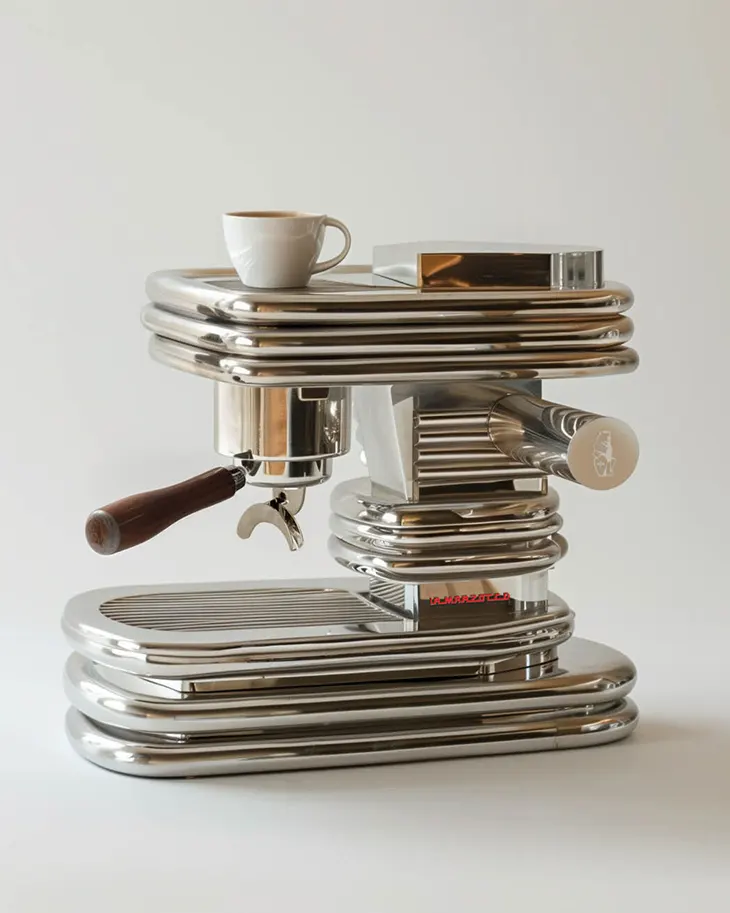
Sustainability in this context doesn’t rely on neutrality, it thrives in personality, experimentation, and transparency. The espresso machine becomes a vessel not just for function, but for larger ideas about design’s role in shaping perception. Through color, material contrast, and unconventional structure, these pieces show how reuse can hold narrative, provoke emotion, and expand the visual vocabulary of sustainable products.
Designers often face the pressure to create things that work flawlessly, look familiar, and meet production demands. But speculative projects like Bobbe’s remind us that there’s also room to ask “what if?” to explore the aesthetics of circularity and let imagination lead. Sustainable design, after all, doesn’t need to follow a single model. Sometimes, it begins with an unlikely object, a new material, or a fictional espresso machine that invites us to think differently about what we keep, what we reuse, and what we value.
